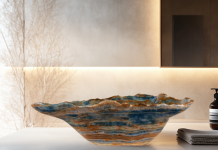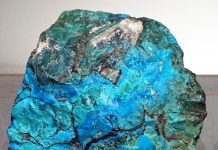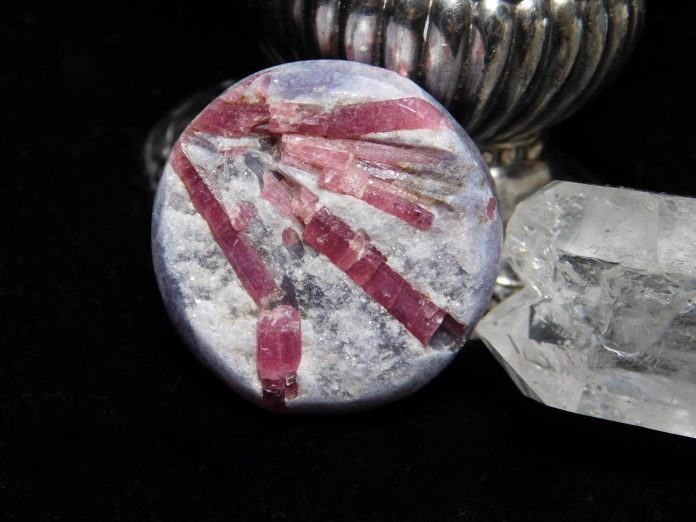
Story and Photos by Erin Dana Balzrette
The rose-pink color of the tourmaline variety known as rubellite and how it contrasts with the lilac-gray of its lepidolite host rock seems to be one of the first things about the rubellite-lepidolite combination that catches people’s attention. When you look more closely at rough pieces of rubellite, you will see that the tourmaline’s natural crystal habit, with its characteristic striations, captures the light beautifully.
The grainy sparkle of rough lepidolite, combined with the smooth, sleek striations of the rubellite are unique and striking. I have cabbed pieces of this rough so that the effect remains visible. It was my favorite part of working with this material.
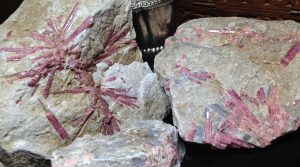
The material I have cabbed was found in Pala, California, and contains heavily included tourmaline with varied depths of rose-pink tones. When cabbing, I often chose to cab rough, rather than a slab. The natural beauty of rough stones is one of my favorite things to highlight, only polishing the back and sides. This allows jewelers and artisans to work with and create their art around a more natural-looking stone, giving distinction to their designs.
More importantly, I enjoy seeing for myself what there is to see in a stone—taking it to the wheels and letting it “roll” there until I am surprised by what I am shown as the stone moves from wheel to wheel in my hands, and then sharing that with other people.
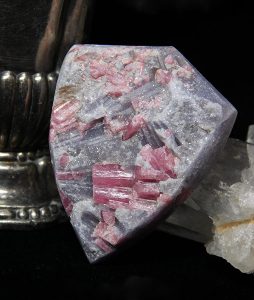
There are many pieces of rough that have a broken side, as well as a near-specimen side. Many are collected by miners or rockhounds and left in boxes as “finds”, but never placed where they can be admired. They are too small and not near the perfection level of a specimen, yet too loved to be left behind. Cabbing the rough only where the damage to the piece is can bring the specimen back to life allowing people to see the different minerals, and crystals in the rough, while leaving much of the original rock intact.
Cabbing this way is more of an art of practice and patience than design. Picking out a piece of rough with a beautiful side of gorgeous, striated rubellite and polishing just the back of the lepidolite. It requires care, as the two have such different levels of hardness. Lepidolite is a much softer material, with a Mohs hardness of a 3, while the rubellite has a Mohs hardness of nearly 8. As a self-taught lapidary artist, I have always cabbed without a dop stick. I cab by feeling the material in my hand, using the wheels with trial and error, changing the amount of pressure I use or which wheel I start with.
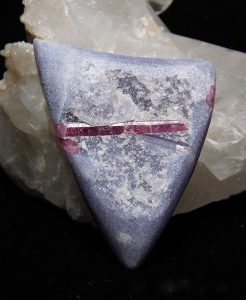
There are many variables, when working with rough. There are differences not only between pieces of rough, but within the same piece. Each piece must be looked at as an individual when deciding how to proceed.
With rough like the rubellite-lepidolite combination, I work through my wheels slowly, protecting the side that is showing the near-perfect striated rubellite. I decide whether I want the lepidolite to be smooth or left grainy and rough. I continue until I have produced something that I feel shows the natural beauty of the mineral and crystals I am cabbing and might be either a display piece or one that could be set for jewelry. I like to think the stone knows what it wants to be, and enjoy it when I am able to help show the stones as they were found in my cabbing.



